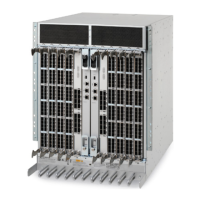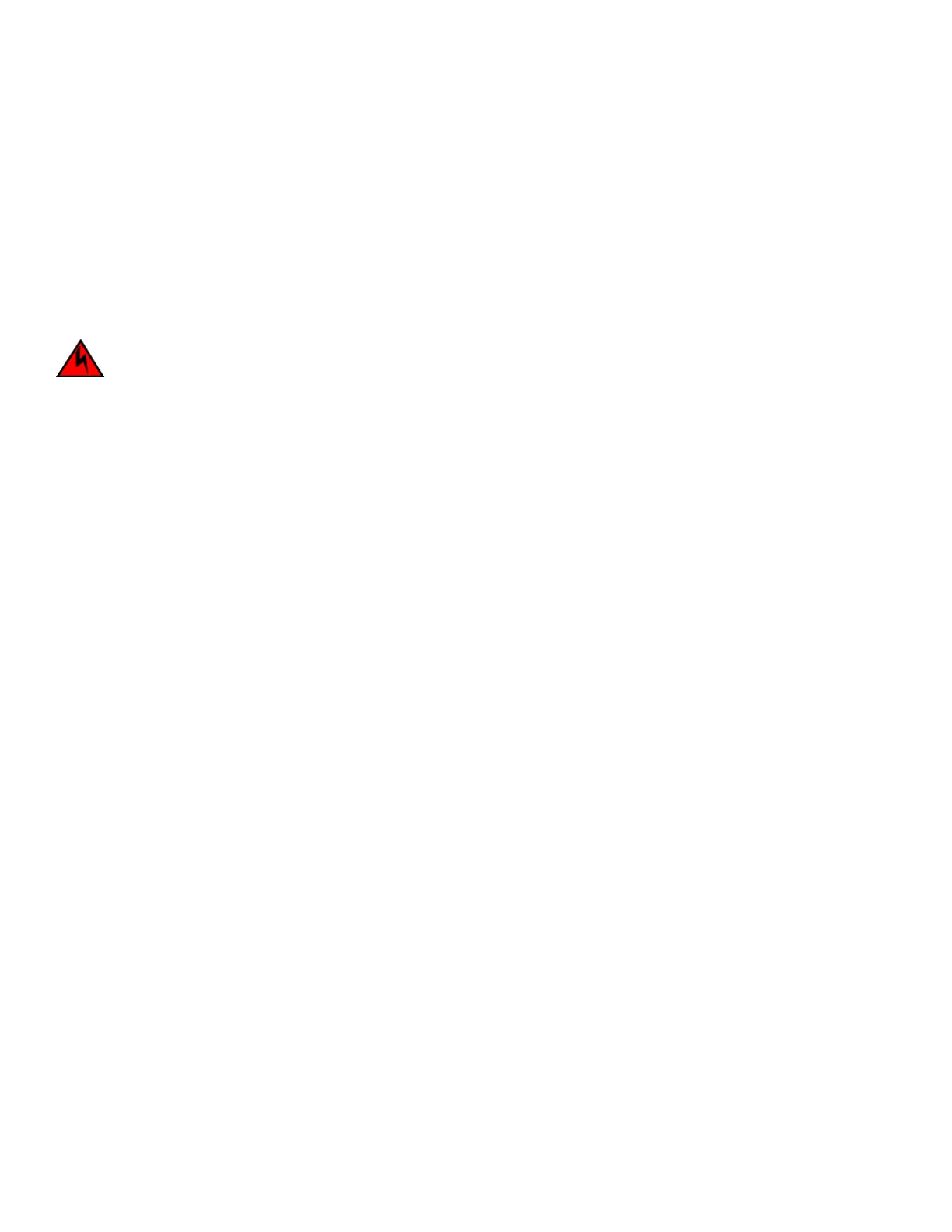NOTE
For information about the transceivers that are qualied for the Brocade chassis, refer to the Tranceiver Removal and
Replacement section.
Removing a blade
Complete the following steps to remove a blade.
Follow electrostatic discharge (ESD) precautions when removing a blade. Wear a wrist grounding strap connected to chassis ground (if
the device is plugged in) or a bench ground.
DANGER
For safety reasons, the ESD wrist strap should contain a series 1 megaohm resistor.
NOTE
Before removing any cables from a blade, note the cable order (identify each cable by its physical port). It is a good practice to
keep a table of cable to port mapping.
NOTE
If multiple blades are being replaced, replace one blade at a time.
This procedure is applicable for all the port and application blades supported on the device.
1. Remove the chassis door.
2. Check the power LED, status LED, and port status LED to identify any possible problems. A failed port or application blade can
be identied by inspecting the LEDs on the front panel of each blade.
3. Establish a Telnet or console session.
Before replacing a blade, establish a Telnet or console connection to determine a failure and verify operation after replacement.
Use the switchShow command to view the status of the blades.
4. Check for adequate cable slack. Ensure there is plenty of cable slack to remove a blade without cable obstruction.
5. Ensure that the part number on the unit being replaced matches the replacement part number. The chassisShow command
displays information about the blades, including part numbers (xx-xxxxxxx-xx), serial numbers, and additional status.
6. Ensure that trac is not owing through the blade (port status LED should be o) prior to disconnecting cables.
7. Ensure that trac is not owing through the blade.
8. Disconnect all cables and transceivers from the blade. For mSFP transceivers (FC8-64 only), it is recommended that you use
the pull tab to remove the transceiver from the blade.
9. If removing an FX8-24 extension blade, perform the following steps:
a) Delete all fciptunnel congurations via the portcfg fciptunnel slot / vePort command.
b) Delete all IP Routes dened on the blade to be removed via the portcfg iproute command.
c) Delete all IP interfaces (IPIFs) dened on the blade via the portcfg ipif slot/geX | xgeX command.
d) If logical switches are used on the switch, move all FX8-24 ports back to the default logical switch.
NOTE
If you are removing the FX8-24 blade to install in a dierent slot, you must remove conguration using the preceding
steps, then recongure the blade in the new slot. If you move the blade without performing these steps and the blade
faults, you must move the blade to the original slot and remove conguration.
10. Unscrew the two thumbscrews from the ejectors on the blade using the Phillips screwdriver. Unscrew the top thumbscrew until
it pops out. This initiates a hot-swap request.
Port and application blade removal and replacement
Brocade DCX 8510-8 Backbone Hardware Installation Guide
53-1002180-15 103

